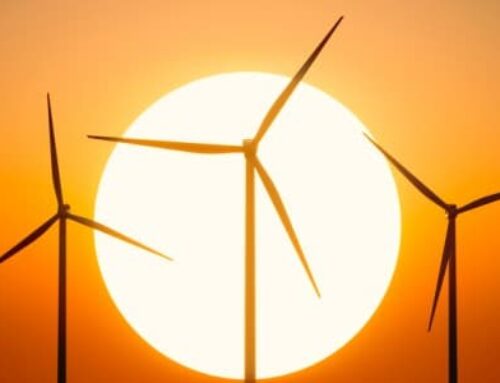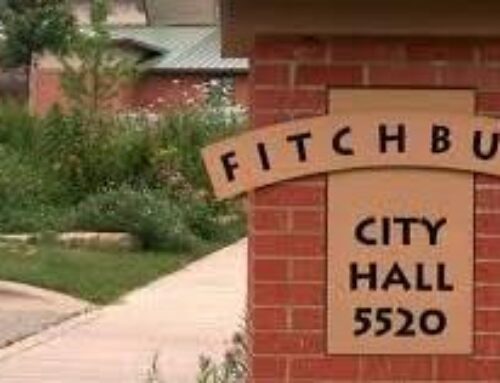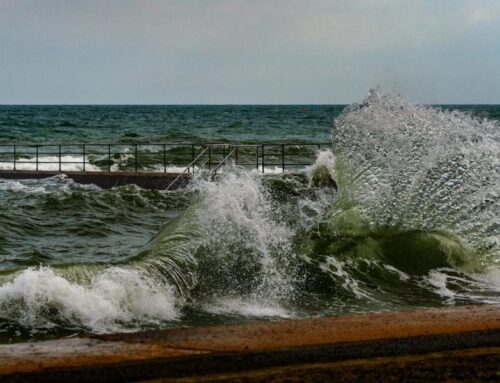Map shows what’s possible with federal clean energy investment in Pa.
May 9, 2025
A new map shows how Inflation Reduction Act money in the form of grants and tax credits for renewable energy and climate resiliency projects has been invested in Pennsylvania. Evergreen Collaborative and Penn Environment Research & Policy Center compiled a snapshot of 50 or so projects across the state from public announcements, press releases and work on the ground.
Flora Cardoni is the deputy director of PennEnvironment. She acknowledges that, though some IRA money has been frozen and contracts canceled, the map shows that climate projects are popular across the state.
LISTEN to the interview
https://s3.us-east-1.amazonaws.com/media.alleghenyfront.org/AF050925_KH_IRAmap.mp3
Kara Hoslopple: How much has Pennsylvania received from the IRA?
Flora Cardoni: Federal investments from the Inflation Reduction Act in Pennsylvania state agencies and through a lot of these grants exceed $3 billion. There’s also a lot of funding through the Inflation Reduction Act for federal clean energy and energy efficiency tax credits for individuals and businesses and nonprofits. We found that last year, 160,000 Pennsylvanians saved more than $260 million on their taxes because of those investments, so the total is much higher.
Kara Holsopple: Is this money that has already rolled out in people’s bank accounts, or is it money that’s promised?
Flora Cardoni: This map highlights projects that are in place — so, you know, houses of worship that have already gone solar or upgrades that have been made to energy efficiency, which is great. A huge amount of progress [has been made] across the Keystone state with folks becoming more energy independent, increasing the amount of clean renewable energy and saving energy and money.
But unfortunately, there are a lot of investments that have been promised to Pennsylvania that are being frozen or stalled. And there are risks to programs like those clean energy tax credits and incentives being rolled back as well.
Kara Holsopple: Tell me a little bit about a couple of the projects highlighted.
Flora Cardoni: There’s a dairy farm that received a grant to install about 400 solar panels, which will not only help them be more energy independent and resilient but also save the farm about $15,000 in energy costs each year. We know that increasingly our Pennsylvania farmers are facing a tight bottom line, so going solar is certainly a way to help save money while also investing in a cleaner future.
There is a machine and fabrication company in Lawrence County, Hall Industries, that’s installing energy-efficient LED lighting with federal clean energy funding, which will lower their energy consumption by about 14%, saving energy, lowering pollution, but also saving the company about $15,000 a year in energy costs.
I also just like to highlight all of the houses of worship that are going solar. Crafton Heights Presbyterian is a great example where by going solar, they’re reducing their energy costs in a way that’s allowing the church to invest more in their mission work, food pantry, preschool, youth programs, and helping at the same time kind of with their values with care for creation and building a cleaner world.

Tree of Life Lutheran Church in Harrisburg says its solar panels provide almost all the power it needs for its three buildings. Photo: Karen Hendricks for Climate Solutions
Kara Holsopple: Looking ahead, if Congress or the Trump administration were to repeal these clean energy tax credits or incentives, what happens then?
Flora Cardoni: That’s a great question. Repealing federal clean energy tax credits, grants, and incentives will certainly make it harder for Pennsylvanians to choose clean energy and will, unfortunately, derail Pennsylvania’s renewable energy progress.
Federal tax credit incentives and rebates are really critical because they lower that upfront cost of going solar or getting an electric vehicle. Right now, these credits can cover up to 30% of the cost of a lot of these upgrades, up to 40%, depending on where you are in the state and country.
It’s really critical that these programs stay in place to help more Pennsylvanians choose clean energy. Unfortunately, there could be a vote in Congress as soon as May 12th to repeal some of these tax credits and incentives.
Kara Holsopple: Are there other pots of money or resources available for people who don’t have the money upfront?
Flora Cardoni: There should be money coming soon from the DEP, the Department of Environmental Protection in Pennsylvania. It actually also has Inflation Reduction Act money, but for energy efficiency home upgrades in the form of rebates. That money has already come to the state, and DEP designed a program to help homeowners, but also landlords for multifamily buildings, tap into rebate programs to make it more affordable to do some of this energy efficiency work, instead of having to wait until tax season.
It includes things like weatherization, which of course, is lower-cost, lower-effort, and energy efficiency upgrades that still save you a lot of money on your utility bills because you’re wasting less energy. That program should be coming out from DEP soon.
Otherwise, there’s certainly more that the state can do to help Pennsylvanians choose clean energy. There are a lot of policies at the state level to make it easier and more affordable, like currently pending legislation to authorize community energy. Community members who might not be able to put solar on their own roofs because of the angle of the roof or the cost can invest in a solar project with their neighbors. That legislation is currently in the state legislature.
The governor has a clean energy plan called the Lightning Plan, with a lot of other policies that would help with renewable energy in the Commonwealth and energy efficiency programs to make it easier and more affordable. Certainly, the state can take the lead on clean energy investments at home.
Kara Holsopple: What do you hope people who look at the map will take away from it?
Flora Cardoni: Pennsylvania is pretty behind the rest of the country in terms of the growth of clean energy. In fact, depending on the year, we rank 48th or 49th for percent growth of wind, solar and geothermal over the last decade, which can be pretty disheartening.
I think what this map shows is that even with those statistics, there are many Pennsylvanians –businesses, nonprofits, individuals across the state – who are investing in clean energy and energy efficiency, who are taking advantage of this clean, renewable, abundant energy, who are taking these steps to save money on their utility bills.
I hope Pennsylvanians who see this map are empowered to follow their lead and consider going solar or making energy efficiency upgrades themselves. I hope people are encouraged to keep up their advocacy for clean, renewable energy at the state and federal levels. And I hope our elected officials are encouraged to keep building on this momentum to build a cleaner and greener world for us all.
Flora Cardoni is the deputy director of PennEnvironment.
Search
RECENT PRESS RELEASES
Related Post




